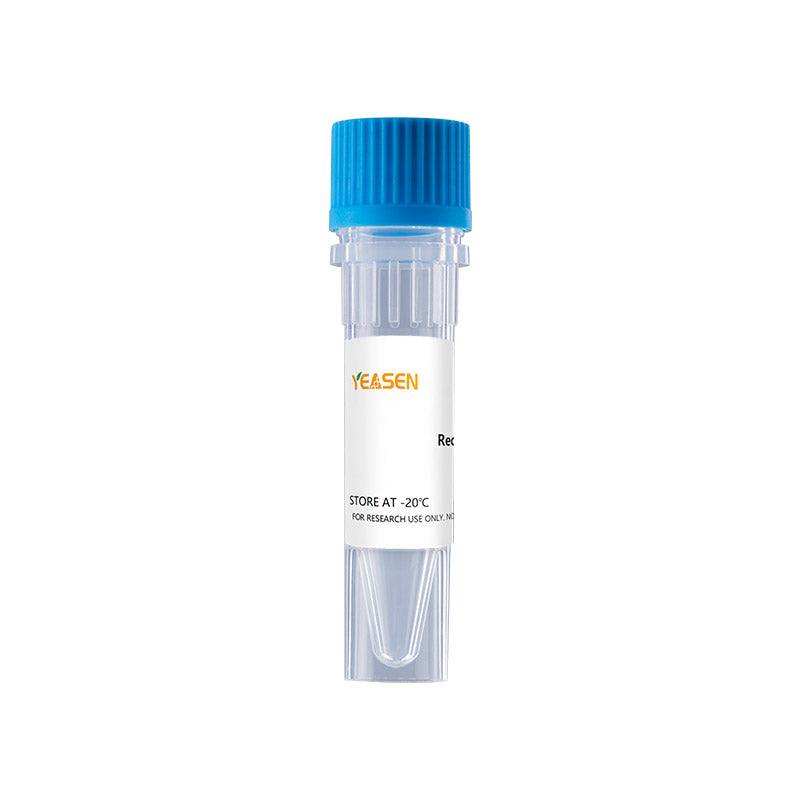Description
TNF receptor 1 (TNF RI; also called TNF R-p55/p60 and TNFRSF1A) is a 55 kDa type I transmembrane protein member of the TNF receptor superfamily, designated TNFRSF1A. Human TNF RI is a 455 amino acid (aa) protein that contains a 21 aa signal sequence and 190 aa ECD with a PLAD (pre-ligand assembly domain) that mediates constitutive dimer/trimer formation, followed by four CRD (cysteine-rich domains), a 23 aa transmembrane domain, and a 221 aa cytoplasmic sequence that contains a neutral sphingomyelinase activation domain and a death domain. The ECD of human TNF RI shows 70%, 69%, 80%, 80%, and 73% aa identity with mouse, rat, canine, feline and porcine TNF RI, respectively; and it shows 23% aa identity with the ECD of TNF RII. Both TNF RI and TNF RII (TNFRSF1B) are widely expressed and contain four TNF-alpha trimer-binding CRD in their ECD. However, TNF RI is thought to mediate most of the cellular effects of TNF-alpha. It is essential for proper development of lymph node germinal centers and Peyer's patches, and for combating intracellular pathogens such as Listeria. TNF RI is also a receptor for TNF-beta /TNFSF1B (lymphotoxin-alpha ). TNF RI is stored in the Golgi and translocates to the cell surface following proinflammatory stimuli. TNF-alpha stabilizes TNF RI and induces its sequestering in lipid rafts, where it activates NF kappa B and is cleaved by ADAM-17/TACE.
Product Properties
|
Synonyms |
Human sTNF RI |
|
Accession |
|
|
GeneID |
|
|
Source |
E.coli-derived Human sTNF RI protein,Ile22-Thr211. |
|
Molecular Weight |
Approximately 21.2 kDa. |
|
AA Sequence |
IYPSGVIGLV PHLGDREKRD SVCPQGKYIH PQNNSICCTK CHKGTYLYND CPGPGQDTDC RECESGSFTA SENHLRHCLS CSKCRKEMGQ VEISSCTVDR DTVCGCRKNQ YRHYWSENLF QCFNCSLCLN GTVHLSCQEK QNTVCTCHAG FFLRENECVS CSNCKKSLEC TKLCLPQIEN VKGTEDSGTT |
|
Tag |
None |
|
Physical Appearance |
Sterile Filtered White lyophilized (freeze-dried) powder. |
|
Purity |
> 97 % by SDS-PAGE and HPLC analyses. |
|
Biological Activity |
Fully biologically active when compared to standard. The ED50 as determined by its ability to inhibit the TNF-alpha mediated cytotoxicity in the L-929 cells is less than 0.05 μg/mL, corresponding to a specific activity of > 2 × 104IU/mg in the presence of 0.25 ng/mL of rHuTNF-alpha. |
|
Endotoxin |
< 0.1 EU per 1μg of the protein by the LAL method. |
|
Formulation |
Lyophilized from a 0.2 µm filtered solution in PBS, pH 7.4. |
|
Reconstitution |
We recommend that this vial be briefly centrifuged prior to opening to bring the contents to the bottom. Reconstitute in sterile distilled water or aqueous buffer containing 0.1% BSA to a concentration of 0.1-1.0 mg/mL. Stock solutions should be apportioned into working aliquots and stored at ≤ -20°C. Further dilutions should be made in appropriate buffered solutions. |
Shipping and Storage
The products are shipped with ice pack and can be stored at -20℃ to -80℃ for 1 year.
Recommend to aliquot the protein into smaller quantities when first used and avoid repeated freeze-thaw cycles.
Cautions
1. Avoid repeated freeze-thaw cycles
2. For your safety and health, please wear lab coats and disposable gloves for operation.
3. For research use only.
Payment & Security
Your payment information is processed securely. We do not store credit card details nor have access to your credit card information.
Inquiry
You may also like
FAQ
The product is for research purposes only and is not intended for therapeutic or diagnostic use in humans or animals. Products and content are protected by patents, trademarks, and copyrights owned by Yeasen Biotechnology. Trademark symbols indicate the country of origin, not necessarily registration in all regions.
Certain applications may require additional third-party intellectual property rights.
Yeasen is dedicated to ethical science, believing our research should address critical questions while ensuring safety and ethical standards.

